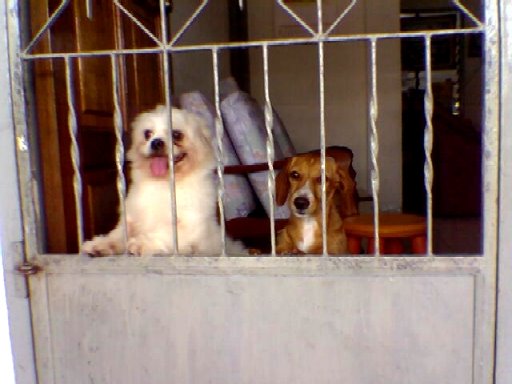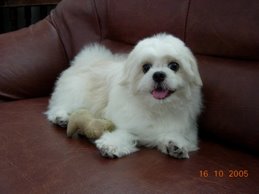Article From SubmitYOURArticle.com: Shetland Sheepdog Dog Breed Profile
Description: The Shetland Sheepdog is a small dog
that stands approximately 13 to 16 at the
withers. It will weigh between 14 and 26 pounds,
depending on the dog's sex. Also known as the
Sheltie, it has a double coat consisting of long,
roughish hairs over a shorter, softer undercoat.
The head of the Shetland Sheepdog is
wedge-shaped, tapering to the nose. The ears are
what is called 3/4 erect, with the tips folded
down. The most usual coat color is sable, but
blue-black, tan and white, and black and white
are also common. The Shetland Sheep dog usually
lives for 12 to 15 years.
History: Although many people consider that the
Shetland Sheepdog looks like a miniature
Rough-Haired Collie, it is actually descended
from the Border Collie. Taken to the island of
Shetland, the Border Collie was bred with a dog
called the Icelandic Yakkin, which is extinct.
The Collie was also bred into the dog to produce
the Sheltie, which was recognizable as a breed by
the early 18th century. The flocks of sheep on
the Shetland Islands needed a guard and herding
dog and the Shetland Sheepdog filled this task
admirably.
Temperament: The Shetland Sheepdog is a gently,
docile dog that makes an excellent and loyal
companion to its human family. As the Shetland
Sheep dog was developed as a herding and guard
dog, it still manifests these qualities for its
human friends, and will prove to be a good
watchdog, alerting the family with barks if a
stranger comes to the house. The Sheltie is a
kind dog that does very well with children. A
word of caution would be that because this dog is
small, it might be inadvertently injured if
children were too rough with it.
Health Issues: The most frequently seen problem
in the Shetland Sheepdog is the possibility of
diseases or structural malformation of the eyes.
Another serious problem is Von Willebrand's
Disease, a type of hemophilia. Unlike other
breeds, in which an affected dog can often live a
normal life span, a Sheltie with this condition
will generally succumb to it at an early age. Hip
dysplasia is found in this breed as are problems
with the kneecap.
Grooming: It would probably be considered that,
given the long coat of the Shetland Sheepdog,
that a great deal of time would be involved in
grooming this dog. Surprisingly, the coat only
needs to be brushed once a week, except during
the spring and fall sheds. The Shetland Sheepdog
should only be bathed when it is absolutely
necessary. The toenails should be kept short, and
attention should be paid to make sure the hair
between the toes does not grow too long.
Living Conditions: The Shetland Sheepdog is an
intelligent, loyal little dog that wants to be
near its human friends. It is a dog that requires
a good deal of exercise, so an active family is
best. A large yard is probably best for the
Sheltie, giving it ample space for play and
running. This dog can live in an apartment as
long as its owner gives it sufficient opportunity
for exercise.
----------------------------------------------------
For more information on the Shetland Sheepdog,
Training and Puppies for sale visit the page
below.
http://www.scottspuppypalace.com
EasyPublish this article: http://submityourarticle.com/articles/easypublish.php?art_id=87217














.jpg)






.jpg)

0 comments:
Post a Comment